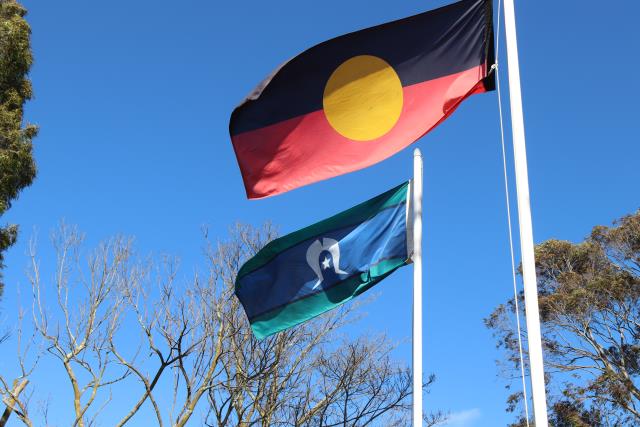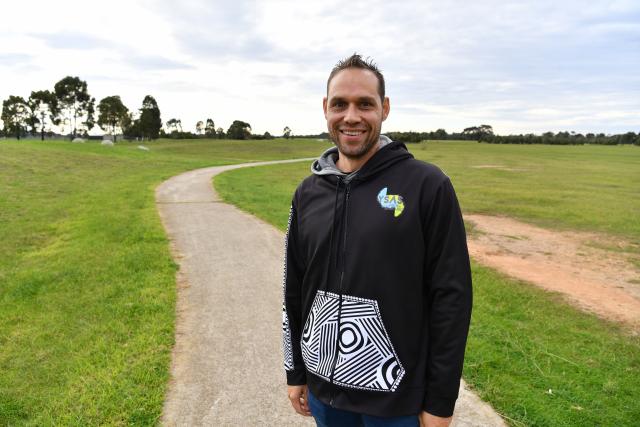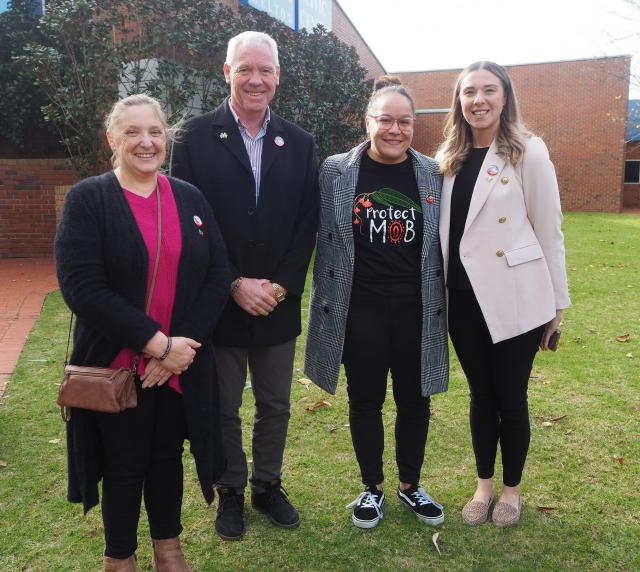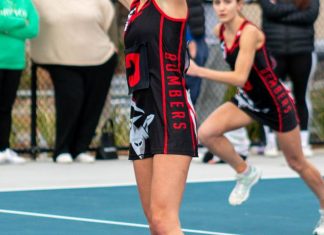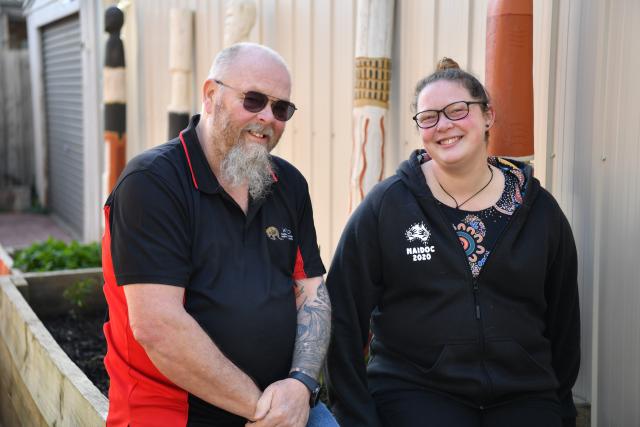
National Aborigines and Islanders Day Observance Committee (NAIDOC) Week is a time to recognise and celebrate the history, culture and achievements of Aboriginal and Torres Strait Islander people across Australia. Olivia Condous spoke to Indigenous people who work and live in the western suburbs on what the week means to them and their hopes for the future.
Every year Australians celebrate Indigenous culture during national NAIDOC Week, held on the week of the first Sunday in July.
The theme for this year is ‘Get up! Stand up! Show up!’, designed to commemorate Indigenous peoples long history of continuing to fight for change.
NAIDOC Week aims to unite the country in celebrating Aboriginal culture and advocating for better recognition and understanding.
There are many Indigenous figures across the western suburbs who are strong advocates and who work hard to support their community and culture.
Melton’s Lucy Webster is a Kamilaroi woman who is the deputy chairperson of Kirrip Aboriginal Corporation and a well-known local artist.
To her, celebrating NAIDOC Week was all about Indigenous cultures receiving the recognition they deserve.
“It’s all about recognising our culture and how it is still alive today, and it is the oldest living culture in the world,” Ms Webster said.
“The fact that Melton and a lot of councils are now actually recognising that and seeing the significance of NAIDOC Week is just fantastic,
“It’s helping us to share our culture further and get the acknowledgement and recognition that is well overdue.”
Ms Webster’s Indigenous art exhibition Winanga Burruguu is currently displayed at the Melton Library, exploring traditional Aboriginal art styles and is designed to bring further awareness of Aboriginal culture among the wider community.
Ms Webster said she hoped to see more significant acknowledgment and understanding of Aboriginal culture in the future.
“It’s only in recent years that it’s really started being taught more accurately in schools and things, so I would love to see a much more in depth understanding taught within our school system.”
She said education was integral to eradicating racism towards Indigneous people in Australia.
“A lot of people don’t even actually notice that’s still happening.”
Ms Webster said the hopes she held for the future aligned with this year’s NAIDOC Week theme.
“It’s all about looking for that change, spreading that awareness and taking action.”
Scott Krakouer is a Minang Noongar man who works for Youth Support and Advocacy Service (YSAS), based in the west.
He said NAIDOC Week was a great opportunity to celebrate and share Aboriginal culture with all Australians.
“It’s not just about Aboriginal people getting involved in NAIDOC events or cultural activities, it’s about the whole community embracing the First People of this country and embracing the culture of Aboriginal people,” Mr Krakouer said.
“It’s for Aboriginal people to proudly share that with everyone.”
Echoing Ms Webster’s sentiments, he said the main improvement he wanted to see within the wider community was more education about Aboriginal people and culture.
“It’s getting a lot better in my lifetime, but I think we still have a long way to go in terms of just how well educated the general public is about Aboriginal issues and the reasons behind those issues, which stemmed from history.”
Mr Krakouer said the narrative the harm inflicted on Aboriginal communities happened a “really long time ago” and that Australia should move on was not accurate.
“A lot of this stuff kind of happened in my parents’ generation, so it really wasn’t that long ago.
“Aboriginal communities are still feeling the effects of some of the policies and the stuff that happened throughout history.”
Part of Mr Krakouer’s work is finding cultural mentors for Indigenous youth to help them better connect to their culture and identity.
“A big piece of the work is trying to link them with community and culture to help them kind of go on their cultural journey.”
Working in youth support services in the west, Mr Krakouer said more Indigenous people had moved to the area in recent years but services and facilities needed to catch up.
He commended Wyndham council on the recently opened Wunggurrwil Dhurrung Community Centre.
“The new centre in Wyndham Vale is a good start, but having more public spaces in the west where Community can gather and connect with each other [is needed].”
Skye Gooch is the chairperson of the Kirrip Aboriginal Corporation and has lived in Melton for the last 15 years.
She said while she felt proud of her Aboriginal culture every day, she felt “super proud” during NAIDOC Week.
“It’s this whole celebration of culture, but it’s also for me a reminder of the struggles that our old people have gone through and the struggles that continue to face Mob.”
While Ms Gooch said she enjoys celebrating NAIDOC Week, she felt as though the conversations each year weren’t really making progress.
“We’re still talking about the same things that have been happening since the beginning of NAIDOC,” she said.
“While I see that there are struggles still ahead, I’m really hopeful, especially with all the Treaty talk and the Uluru Statement from the Heart. I’m really hopeful that maybe we’ll see a lot more progress in the next couple of years.”
Speaking of the future, Ms Gooch said she hoped that the Australian community, particularly governments, would engage with more truth-telling in Indigenous affairs.
“We can’t move forward unless truth-telling is engaged with and acknowledged, the true history of Australia is acknowledged and then healing can begin.”
Ms Gooch said she believed governments used the phrase “self-determination” as a “buzzword”, but did not actually facilitate the true meaning of the word.
“I just hope that in the future that the government commits to self-determination and listens to the voices because we have the solutions, Aboriginal and Torres Strait Islander people have the solutions.
“It’s just that it’s really hard for governments to listen to us and to let us be the ones leading the way.”
As chairperson of Kirrip Aboriginal Corporation, Ms Gooch said she felt privileged to be able to run events for the celebration and talk to the wider community on behalf of the Indigenous community.
She encouraged residents of the western suburbs to visit Kirrip House in Melton and get involved this NAIDOC Week.
“I’m really proud really of all the work that Kirrip does out here in the west and just encourage everyone in Community, even non-Aboriginal and Torres Strait Islander people, to come down to Kirrip, have some yarns and just get involved this week.”
For a guide on local NAIDOC Week events, visit your local council website or www.naidoc.org.au/local-events/local-naidoc-week-events.


